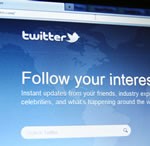
From tweeting the day’s dining hall menu to online posts showing where students can find an empty parking spot, campus officials have found inventive ways to use social media for practical purposes.
The 100 best uses of social media in higher education were released this fall by StudentAdvisor.com, a Massachusetts-based website that helps prospective students compare schools.
The annual ranking reads like a laundry list of the most effective ways campus decision makers can draw students with relevant information that can become an everyday part of their Twitter and Facebook feeds.
Johns Hopkins University in Washington, D.C., for the second consecutive year, was ranked No. 1, owing in large part to its HopkinsInteractive site, which has a real-time Twitter feed featuring eight university-related handles, along with a host of academic and guest blogs.
Read more about Twitter in higher education…
Defendant’s social networking trial makes Rutgers case unique
On one drop-down screen, for example, a student can find the Twitter handles for admissions officers, the Hopkins Insider, and several other Hopkins Twitter feeds.
Harvard University finished second in StudentAdvisor’s social media rankings, and the University of Notre Dame came in third. Ohio State University and Columbia University rounded out the top-five.
Dean Tsouvalas, editor-in-chief of StudentAdvisor, said the innovative ways colleges are using Twitter, Facebook, and other social media platforms prove that campus officials don’t view social sites are frivolous, extracurricular activities.
“What was once used for flash mobs and general communication between college students and parents has now become an essential component of college life today,” Tsouvalas said. “At colleges around the country, social media has the pulse of pop culture while providing a real world temperature in real time.”
Louisiana State University, ranked eighth by StudentAdvisor, tells students via Twitter which of its 23,000 parking spots are available throughout the day. The handle @LSUParking has more than 500 followers, according to the university.
Tufts University was ranked No. 68, grabbing national attention with a recent effort to post the campus’s lunch menu to its official Twitter feed.
The StudentAdvisor ranking made note of the size of social media icons on West Virginia University’s home page. While most Twitter, Facebook, and YouTube icons are subtly places in the corner of a college’s website, WVU displays the symbols front and center, and several times larger than usual.
WVU was also credited for posting a comprehensive list of Facebook do’s and don’ts, which reminds students not to forget that “once you post something, it may live forever, even if you take it down,” and that risqué Facebook posts “may jeopardize [your] chances for a job, or [your] scholarships.”
The social media rankings compared more than 6,000 colleges and universities nationwide, and trimmed them to a list of 100 by analyzing information showing how “active and effective” schools were in engaging students with well-known social media, along with podcasts and other online tools.
StudentAdvisor’s social media rankings come nine months after another national ranking identified colleges and universities with the most visible presence on Twitter.
Klout, a website that tracks the popularity of tweets, released its top 10 college rankings in January, unveiling scores for each college or university based on how often a Twitter message is re-tweeted, the school’s number of followers, and how the school’s tweets are used by influential people in higher education.
Stanford University finished with a top score of 70, followed by three schools that scored 64 in Klout’s ranking: Harvard University, Syracuse University, and the University of Wisconsin-Madison campus.
Klout’s amplification score indicates the likelihood that a Twitter user’s content will “be acted upon”—retweeted, for example. Stanford’s amplification score is 45, slightly below Harvard’s score of 47.
Near the bottom of the top 10, Marquette’s amplification score is 34.
- Research: Social media has negative impact on academic performance - April 2, 2020
- Number 1: Social media has negative impact on academic performance - December 31, 2014
- 6 reasons campus networks must change - September 30, 2014
